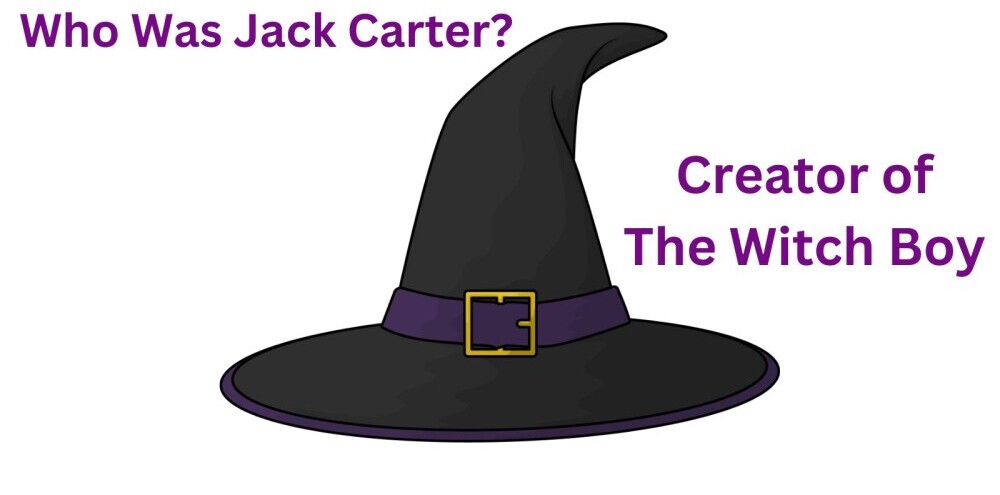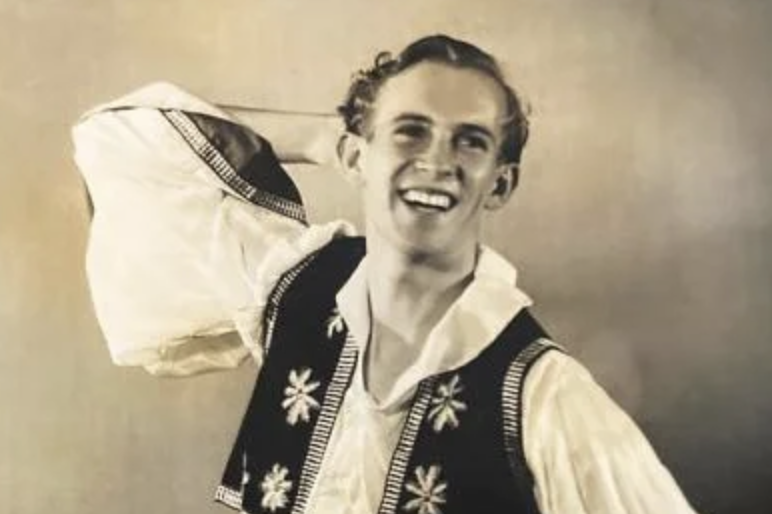Jack Carter was a dancer and choreographer who was born in 1917. He was the creator of The Witch Boy which is a ballet in one act with three scenes.

Who Was Jack Carter?
Jack Carter was born in 1917 in Shrivenham into a farming family, and his experience as a dancer and choreographer was gained outside Britain as much as with the British Companies.
Growing up he had no interest in agriculture but instead was drawn to the world of dance, and in particular, ballet. After leaving school in 1938 he went to Sadlers Wells Ballet School and although he trained and performed as a dancer, his ambition was always to be a choreographer. He started by arranging dances for a local group but with the outbreak of the war in 1939 he was conscripted into the military.
He choreographed his first piece, Fantaisie, in 1946 for Lake’s Continental Ballet.
He also danced with the Sadler’s Wells Opera Ballet, appeared in the film The Red Shoes (1948), and sometimes slept in Victoria Station for lack of money.
He danced with the Ballet Guild in 1946. In the early 1950s, Jack Carter worked with Ballet Workshop, a crucible for young choreographers that had links with Ballet Rambert. He also danced with the original Ballets Russes, Ballet Rambert (creating several excellent works for Ballet Workshop), and Festival Ballet, where he was the resident choreographer. When Ballet Workshop folded, as did the original Ballet Russe where he had been dancing, this left him with no work.
Like many extremely talented people, Jack Carter never gave in when the going got rough even though he was quoted in one obituary as saying, “most probably thinking to throw myself in the Thames.”
In this darkness came a sudden light: an invitation to be the choreographer of the Ballet der Lage Landen, a company of 30 dancers in Amsterdam.
He moved there in 1954 and began producing many fine works, including his big hit, The Witch Boy, in 1956. Using a powerful commissioned score by Leonard Salzedo and designs by Norman McDowell who also danced the title part. Much of his experience was gained in Holland, where he worked from 1954 to 1957 with the Ballet der Lage Landen and in Sweden.
The Witch Boy vividly retells the Ballad of Barbara Allen. It was, though, because of the modest cost of its staging, rather than its gripping theatricality, that London Festival Ballet agreed to take it the following year, allowing their leading man John Gilpin to try something more exciting than his usual classical diet. Carter went on to make other ballets for this company, including London Morning which had a plot and music by Noel Coward.
Thanks to ‘The Witch Boy,’ Carter began working with companies all over the world.
In 1964, he and McDowell decided to launch a small company, London Dance Theatre. For this, he choreographed Agrionia, his favorite, which featured McDowell as a Dionysius who punishes three sisters for refusing to take part in his orgies.
Although the piece was enthusiastically received, the company could not continue without a subsidy. The Arts Council orchestrated its merger with London Festival Ballet, in which Carter became chief choreographer and McDowell artistic director.
His Ballets like Past Recalled (originally named Ouverture, to a Proustian theme), Agrionia, The Witch Boy, and Cage of God are strong in atmosphere and tell their stories through well-drawn characters, indicating a marked narrative ability in their creator.
His choreography skills worked best for small groups on themes that looked at the human condition. He could produce light-hearted and large-scale works and he made many, sometimes controversial, stagings of the well-known classical ballets. But his most famous ballet danced all over the world, was the melodramatic The Witch Boy, based on the American Ballad of Barbara Allen. His personal favourite was the 1964 Agrionia which dealt with madness and murder.
It is hard to compare Jack Carter to his English contemporaries because so much of his work is scattered through theatres in Europe and South America. The Witch Boy illustrates his sense of theatre and place in the tradition of English dramatic choreography.
He worked all over the world and was well-known and much respected, but some commentators suggest that he never got the acclaim in the UK that he deserved. In 1998 after being diagnosed with leukaemia, he died in a London clinic on the 30th December, aged 81.
The Witch Boy
The Witch Boy is a ballet in three acts and the scenery and costumes were done by Jack Carter’s close friend Norman McDowell.
The first performance by Ballet der Lage Landen, Amsterdam was on the 24th of May 1956.
It was first performed by London’s Festival Ballet at the Opera House, Manchester on the 27th of November 1957.
The ballet was set on the American ballad of Barbara Allen.
Unfortunately, I cannot find a video of this ballet, but this is the musical score.
Scene 1:
The general store. Barbara Allen, repelled by the unwelcome advances of the Preacher, flees to the mountains.
Scene 2:
On the mountainside, Barbara Allen meets the Witch Boy, the child of the Conjurman. They fall in love.
Scene 3:
Saturday night at the general store, Barbara Allen brings the Witch Boy back to the village where they join in the dancing.
The preacher turns the people against the Witch Boy.
Accused of witchcraft, he is beaten up and then lynched.
As his body hangs from the rope the Conjurman appears, and the Witch Boy is reborn.


Hi Michel,
This article does an incredible job bringing Jack Carter’s story to life! It’s fascinating to learn about his journey from humble beginnings to becoming a world-renowned choreographer, despite so many challenges. The Witch Boy sounds like a powerful and haunting piece, especially with its roots in the tragic American ballad of Barbara Allen.
Carter’s resilience and creativity really stand out, and it’s inspiring how he stayed true to his vision, even during tough times. The historical insights about Carter’s influence in Europe and his unique approach to storytelling through ballet make this a captivating read.
Thank you for sharing such a compelling piece on an artist who deserves more recognition!
Cheers
John
I was a member of the London Festival Ballet in the early 60s when The Witch Boy was part of our repertoire. I loved this dramatic ballet. The main part was danced by the great John Gilpin and later, danced at very short notice, when he had to take over, by Ben Stevenson while we were on tour in South America. I’m not surprised that this ballet has endured.
I saw this ballet as a young girl at the Festival Hall. It has stayed with me ever since. John Gilpin was sensational.
Hi Pat,
It’s sad when they don’t perform these old pieces anymore. I wish I had seen it live.